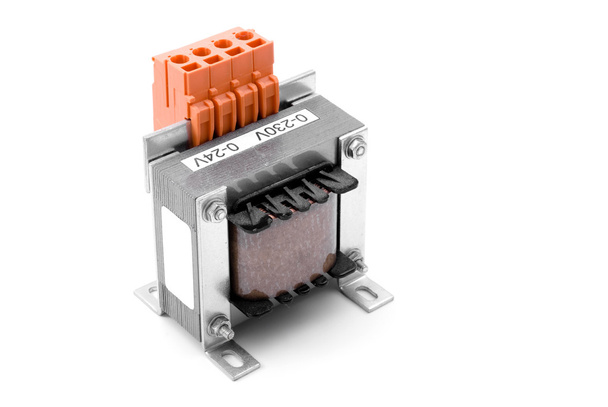Transformer
A transformer is an electrical device that transfers electrical energy between two or more circuits using electromagnetic induction. It is commonly used to change the voltage level in an alternating current (AC) supply, enabling efficient power distribution across different voltage levels. Transformers are essential components in electrical systems, particularly in power generation, transmission, and distribution networks. Their ability to step up (increase) or step down (decrease) voltage makes them vital for long-distance electricity transmission, as higher voltages minimize energy losses during transmission.
A transformer consists of three main components: the primary coil, the secondary coil, and the core. The primary coil is connected to the input power source and generates a magnetic field when an alternating current flows through it. This time-varying magnetic field is then transferred to the secondary coil through the core, which is usually made of laminated steel or ferrite material to concentrate the magnetic flux and minimize energy losses. The secondary coil is where the induced current flows and provides the output voltage to the load or circuit. The voltage induced in the secondary coil depends on the number of turns in the primary and secondary coils, a relationship defined by the turns ratio.
The key principle behind the transformer's operation is electromagnetic induction. When an AC current flows through the primary coil, it creates a changing magnetic field. This fluctuating magnetic field induces an electromotive force (EMF) in the secondary coil. According to Faraday's Law of Induction, the induced voltage in the secondary coil is proportional to the rate of change of the magnetic flux through the coil. The voltage transformation is determined by the ratio of turns in the primary coil to the turns in the secondary coil, given by the equation:
In practical applications, if a transformer has more turns in the primary coil than the secondary coil, it steps down the voltage; conversely, if the secondary coil has more turns, it steps up the voltage. The power (in terms of watts) remains approximately the same in an ideal transformer, as the voltage change is accompanied by an inverse change in current.
Transformers are used in a wide range of applications, from stepping down voltage for household appliances to stepping up voltage for high-voltage transmission lines. They are also used in isolation applications, where electrical isolation is required between circuits. Although transformers are highly efficient, losses still occur due to factors such as resistance in the coils (copper loss) and eddy currents in the core. Despite these losses, transformers remain critical for efficient energy management in electrical grids and various electronic devices.
A transformer consists of three main components: the primary coil, the secondary coil, and the core. The primary coil is connected to the input power source and generates a magnetic field when an alternating current flows through it. This time-varying magnetic field is then transferred to the secondary coil through the core, which is usually made of laminated steel or ferrite material to concentrate the magnetic flux and minimize energy losses. The secondary coil is where the induced current flows and provides the output voltage to the load or circuit. The voltage induced in the secondary coil depends on the number of turns in the primary and secondary coils, a relationship defined by the turns ratio.
The key principle behind the transformer's operation is electromagnetic induction. When an AC current flows through the primary coil, it creates a changing magnetic field. This fluctuating magnetic field induces an electromotive force (EMF) in the secondary coil. According to Faraday's Law of Induction, the induced voltage in the secondary coil is proportional to the rate of change of the magnetic flux through the coil. The voltage transformation is determined by the ratio of turns in the primary coil to the turns in the secondary coil, given by the equation:
In practical applications, if a transformer has more turns in the primary coil than the secondary coil, it steps down the voltage; conversely, if the secondary coil has more turns, it steps up the voltage. The power (in terms of watts) remains approximately the same in an ideal transformer, as the voltage change is accompanied by an inverse change in current.
Transformers are used in a wide range of applications, from stepping down voltage for household appliances to stepping up voltage for high-voltage transmission lines. They are also used in isolation applications, where electrical isolation is required between circuits. Although transformers are highly efficient, losses still occur due to factors such as resistance in the coils (copper loss) and eddy currents in the core. Despite these losses, transformers remain critical for efficient energy management in electrical grids and various electronic devices.
